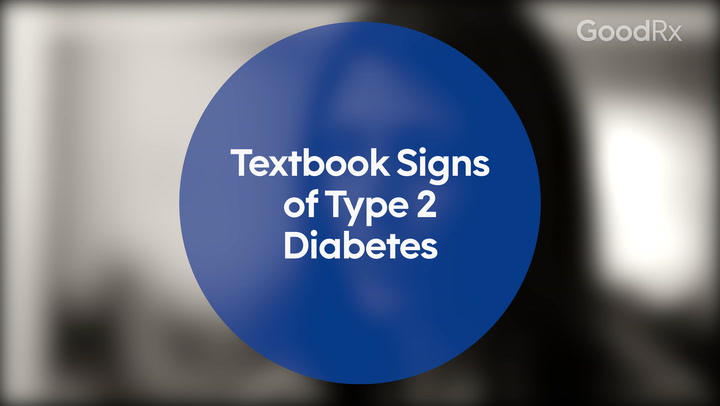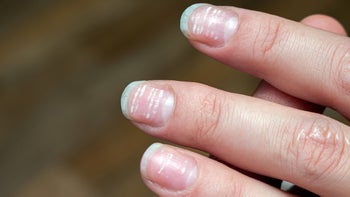
Should You Wear Sunscreen Every Day? The 9 Benefits of Sunscreen, Explained by a Dermatologist
Key takeaways:
No matter where you live or the color of your skin, there are many benefits to wearing sunscreen daily. That’s because ultraviolet (UV) light from the sun can increase your risk of skin cancer and premature aging of the skin.
Many safe and effective sunscreens are available, and choosing one to use daily will give you the best protection from UV rays.
Wear sunscreen that contains a minimum of SPF 30. And make sure your sunscreen is broad spectrum, which protects against both UVA and UVB rays.
Table of contents
Most people know that wearing sunscreen can help protect you from the harmful effects of the sun. It’s common for people to wear sunscreen during the summer months when they’re outdoors for extended periods of time. But what about the rest of the year? And what if you don’t spend much time outside? You might wonder: Should you wear sunscreen every day?
The short answer is yes. You may not realize it, but sun damage adds up over the years. And even if you don’t spend much time outdoors, you’re constantly exposed to ultraviolet (UV) radiation. Using sunscreen daily helps protect your skin from UV light and its harmful effects.
Let’s take a look at the benefits of wearing sunscreen every day.
Pay less for Retin-A
Get Retin-A (tretinoin) for as low as $33 when you use GoodRx, whether you have insurance or not.

1. Prevents sunburn
Sunscreen blocks UVB rays, the type of UV light that causes most sunburns. UVB intensity changes depending on the time of day and the time of year. It’s the strongest at midday and during the spring and fall, but it can burn you year-round. And UVB rays can penetrate clouds, so you can still get a sunburn on an overcast day.
2. Lowers the risk of skin cancer
Too much UV exposure damages the DNA inside skin cells. This can cause abnormal skin cells to grow and replicate uncontrollably, leading to skin cancer. By blocking this UV exposure, sunscreen helps prevent cellular damage that can lead to cancer.
3. Protects against premature skin aging
UV light damages your skin’s collagen and elastin. These are the proteins that keep skin firm and supple. Over time, this damage to collagen and elastin leads to premature aging of the skin, wrinkles, sunspots, and sagging skin.
4. Reduces the appearance of blotchy skin
UV light exposure can cause the small blood vessels in your face to become more prominent. This leads to visible red and purple patches and blotchy skin that doesn’t go away. Wearing sunscreen every day helps prevent these enlarged blood vessels from forming.
5. Reduces the risk of melasma and other types of hyperpigmentation
Chronic UV exposure can also cause dark patches on the skin, such as with melasma and other types of hyperpigmentation. Hyperpigmentation can happen on all skin types and complexions. So everyone — including people with darker skin tones — should wear sun protection daily to help prevent these spots from forming or getting worse.
6. Keeps certain skin conditions from flaring
Many skin conditions, like cutaneous lupus and rosacea, can worsen with even a little bit of unprotected sun exposure. Wearing sunscreen with an SPF 30 or higher can help protect your skin from the triggering effects of the sun. You can choose a mineral or chemical sunscreen. But mineral sunscreen is often a better choice for sensitive skin since it’s less likely to contain irritating ingredients.
Bothered by wrinkles? Sun protection is the best way to prevent or improve the appearance of wrinkles. But there are treatments that can help, too, such as over-the-counter creams and lasers.
Know the signs of skin cancer: Learn what different types of skin cancer look like (so you don’t miss it).
What’s the best way to treat a sunburn? From cool baths to aloe vera, see how three people got rid of their sunburn pain quickly.
7. Protects from sun sensitivity caused by medications
Certain medications — such as doxycycline and hydrochlorothiazide — can increase the skin’s sensitivity to the sun and make it more likely to burn.
8. May reduce skin inflammation
Some sunscreens contain added ingredients that may decrease the inflammation caused by UV rays. Panthenol, aloe vera, and vitamin E are examples of anti-inflammatory sunscreen ingredients that may help calm skin conditions like acne and rosacea.
9. May boost skin hydration
Some sunscreens contain hydrating ingredients that moisturize the skin and help keep the skin barrier intact. Hyaluronic acid and ceramides are two examples of hydrating ingredients that are sometimes added to sunscreens.
Read more like this
Explore these related articles, suggested for readers like you.
What is SPF?
SPF stands for sun protection factor. It measures the amount of protection a sunscreen offers against sunburn from UVB rays. The higher the sunscreen’s SPF factor, the more protection it provides. For example, if you used an SPF 30 as directed, it would take 30 times longer for your skin to burn than if you didn’t use any sunscreen.
SPF 30 blocks about 97% of UVB rays. Higher SPFs block more rays but not by much. SPF 50 blocks about 98% and SPF 100 about 99% of rays. No sunscreen blocks all of the sun’s rays.
It’s important to note that SPF only refers to UVB rays. So, you should look for a broad-spectrum sunscreen. This means it protects against both UVA and UVB rays.
How much SPF do you need?
Different medical organizations have different recommendations for the level of SPF you should use. Here are some specific guidelines:
The CDC and World Health Organization recommend SPF 15 or higher.
The American Academy of Dermatology and American Cancer Society recommend SPF 30 or higher.
The Skin Cancer Foundation recommends an SPF 30 daily, and SPF 50 or higher for a day outdoors.
How do you apply sunscreen correctly?
Sunscreen is effective at protecting your skin, but only if it’s applied correctly. Here are some guidelines to follow:
Use a broad-spectrum sunscreen so you’re protected from both UVA and UVB rays.
Apply sunscreen 30 minutes before going outside. This gives your skin time to absorb it.
Make sure you use enough sunscreen for thorough coverage. Adults should use enough to fill a shot glass for use on the body. For your face, aim for a quarter-sized dollop.
Don’t forget your lips, ears, and scalp (if it’s exposed).
Reapply sunscreen every 2 hours.
Reapply sunscreen after swimming or sweating — even if you’re wearing water-resistant sunscreen. No sunscreen is fully waterproof.
Do you need to use sunscreen if you have dark skin?
Daily sunscreen use is essential for everyone, no matter your skin tone.
People with darker skin do have some natural protection from the sun. But UV rays can still harm your skin. And sun damage — even when you don’t notice signs like sunburn — may eventually appear as hyperpigmentation that’s difficult to treat, like melasma.
Skin cancer is less common in people who have darker skin tones, but it still happens. When it does, it’s often diagnosed later when the condition is more advanced and harder to treat.
Can sunscreen be bad for you?
Some people have concerns about the safety of sunscreen ingredients. One reason is that
research shows that six common sunscreen ingredients — avobenzone, oxybenzone, octocrylene, homosalate, octisalate, and octinoxate — can be absorbed into the bloodstream.
But we don’t know what effect this has on your health, if any. So the FDA is asking manufacturers to provide more safety data on several sunscreen ingredients. In the meantime, the FDA hasn't labeled these ingredients as unsafe, and it still recommends using sunscreen regularly.
People have also raised other concerns about sunscreen, including:
Two sunscreen ingredients — oxybenzone and octinoxate — have been associated with damage to coral reefs and other aquatic life. Hawaii has banned these ingredients.
Oxybenzone may act as a mild hormone in the body. This hasn’t been definitively linked to health problems. Still, the American Academy of Pediatrics recommends avoiding using oxybenzone sunscreens on children.
Benzene, a chemical known to cause cancer, was found in some batches of sunscreen (you can see which products here). But there’s no evidence that sunscreen causes cancer. And there’s evidence that UV rays from the sun do.
Alternatives to sunscreen
Wearing sunscreen every day is a safe and effective way to block harmful UV rays. But there are other ways to protect yourself that don’t involve sunscreen:
Stay in the shade, especially between 10 a.m. and 4 p.m. in the summer.
Wear brimmed hats and sun-protective clothing.
Use an umbrella when outside.
Wear sunglasses that block UVA and UVB rays. This protects your eyes and the skin around them.
Use a UV-protective window film on car windows.
Keep track of the UV index, which measures how intense the UV radiation is in your area each day.
Frequently asked questions
Sunscreen contains ingredients that protect your skin from the sun’s UV radiation. There are two main types of sunscreen. Chemical sunscreens use ingredients like avobenzone, oxybenzone, and octisalate to absorb the sun’s rays like a sponge. Mineral (or “physical”) sunscreens use ingredients like zinc oxide and titanium dioxide to absorb and reflect the sun’s rays.
Sunscreen expires 3 years from purchase. The FDA requires that sunscreen hold its strength for that long. But it’s important to note that there are factors that can make sunscreen expire faster. For example, leaving sunscreen out in the hot sun can break down its ingredients. So can humidity. If your sunscreen has been sitting outdoors in summer weather, it’s a good idea to replace it.
Sunscreens with high SPFs are designed to block most of the sun’s UVB rays. And UVB rays are involved in triggering vitamin D production in the skin. So it’s natural to wonder whether sunscreen blocks vitamin D production. But research suggests that sunscreen has only a minor effect on vitamin D production. This may be because even with proper use, sunscreen cannot block out all UV rays. And remember that there are other ways to get vitamin D, too, like from the foods you eat.
Most dermatologists agree that the best sunscreen to use is whichever one you’ll use consistently. For the best protection, choose a sunscreen that provides broad-spectrum coverage and an SPF of 30 or higher. Beyond that, sunscreen choice is a matter of personal preference. Some people prefer mineral sunscreens, while others prefer chemical sunscreens. Hybrid sunscreens use a combination of mineral and chemical filters. To minimize steps in your skin care routine, you can try “all-in-one” sunscreens that contain added skin-nourishing ingredients, such as a moisturizer and/or antioxidant.
The bottom line
The sun’s UV rays increase the risk of skin cancer, premature skin aging, and hyperpigmentation. This damage adds up over time. So no matter the season, how much time you spend outdoors, or the color of your skin, it’s a good idea to wear sunscreen daily. Using sunscreen can lower each of these risks by protecting your skin from damaging UV rays.
Look for a broad-spectrum sunscreen with an SPF of 15 or higher. Be sure to use enough sunscreen for thorough coverage. You can also protect yourself from the sun by staying in the shade and wearing hats or UV-blocking sunglasses.
Why trust our experts?



References
American Academy of Dermatology Association. (2025). Sunscreen FAQs.
American Cancer Fund. (n.d.). American Cancer Fund sunscreen ingredients.
American Cancer Society. (2024). How to use sunscreen.
Centers for Disease Control and Prevention. (2024). Sun safety facts.
Cole, C., et al. (2014). A broad spectrum high-SPF photostable sunscreen with a high UVA-PF can protect against cellular damage at high UV exposure doses. Photodermatology, Photoimmunology & Photomedicine.
HealthyChildren.org. (2024). Sun safety: Information for parents about sunburn & sunscreen. American Academy of Pediatrics.
Matta, M. K., et al. (2020). Effect of sunscreen application on plasma concentration of sunscreen active ingredients: A randomized clinical trial. JAMA.
Moulite, M. (2018). Hawaii bans sunscreens that harm coral reefs. CNN Health.
National Academies of Science, Engineering, and Medicine., et al. (2022). Environmental impact of currently marketed sunscreens and potential human impacts of changes in sunscreen usage. Review of Fate, Exposure, and Effects of Sunscreens in Aquatic Environments and Implications for Sunscreen Usage and Human Health.
Raymond-Lezman, J. R., et al. (2023). Benefits and risks of sun exposure to maintain adequate vitamin D levels. Cureus.
Skin Cancer Foundation. (2025). All about sunscreen.
Skin Cancer Foundation. (2025). Sun-protective clothing.
Skin Cancer Foundation. (2025). UV radiation & your skin.
Suh, S., et al. (2020). The banned sunscreen ingredients and their impact on human health: A systematic review. International Journal of Dermatology.
United States Environmental Protection Agency. (2025). The UV index.
U.S. Food and Drug Administration. (2017). Sun protection factor (SPF).
U.S. Food and Drug Administration. (2019). Sunscreen drug products for over-the-counter human use. Federal Register.
U.S. Food and Drug Administration. (2020). FDA insight: A “topical” discussion on sunscreen.
U.S. Food and Drug Administration. (2024). Sunscreen: How to help protect your skin from the sun.
Valisure. (2021). Valisure citizen petition on benzene in sunscreen and after-sun care products.
Valisure. (2021). Valisure detects high levels of known human carcinogen benzene in several products and requests FDA actions.
Wadyka, S. (2019). What you need to know about sunscreen ingredients. Consumer Reports.
Wadyka, S. (2023). Sunscreen for dark skin is a must. Consumer Reports.
World Health Organization. (2024). Radiation: Protecting against skin cancer.





























